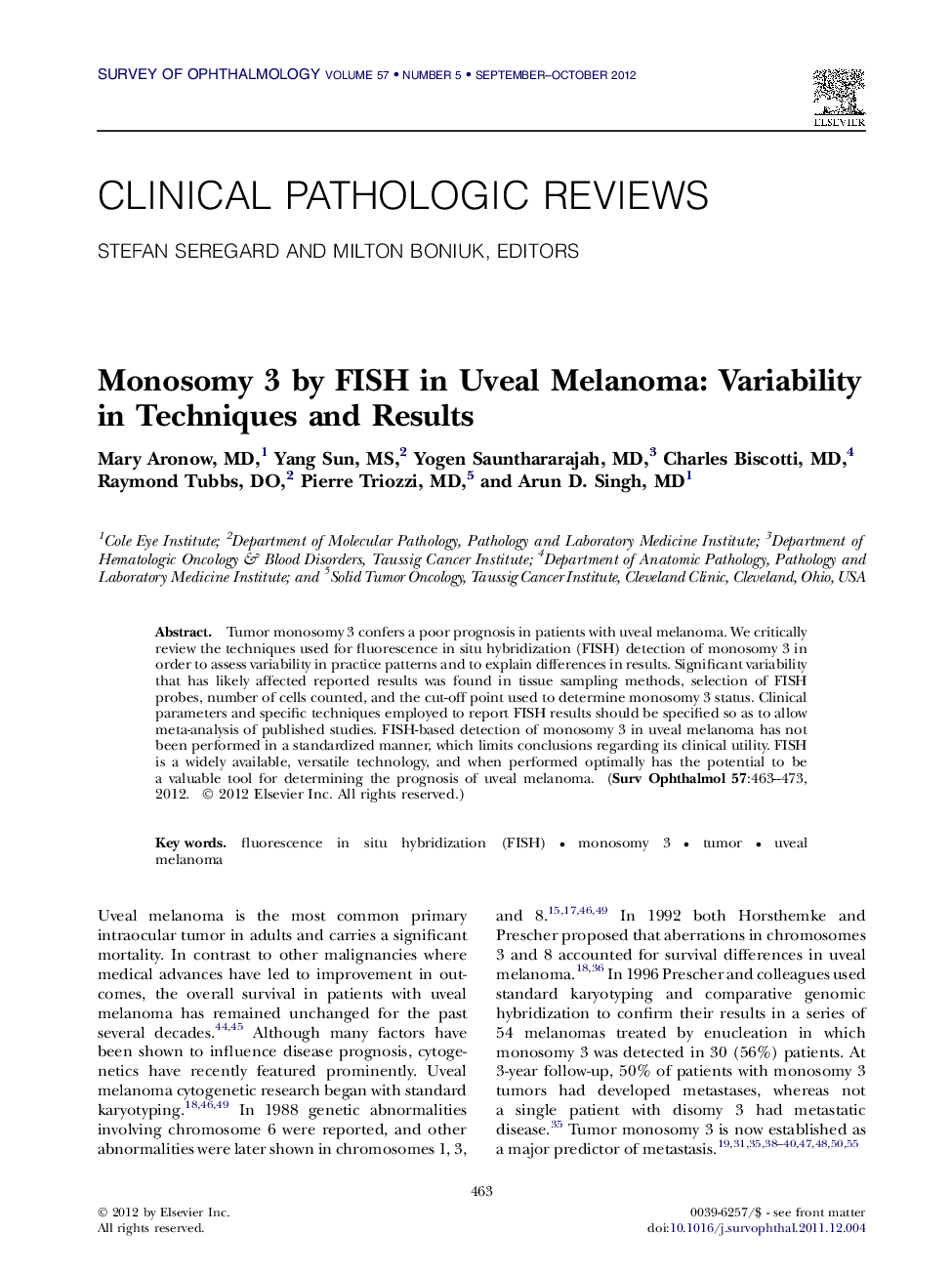| Article ID | Journal | Published Year | Pages | File Type |
|---|---|---|---|---|
| 4032804 | Survey of Ophthalmology | 2012 | 11 Pages |
Tumor monosomy 3 confers a poor prognosis in patients with uveal melanoma. We critically review the techniques used for fluorescence in situ hybridization (FISH) detection of monosomy 3 in order to assess variability in practice patterns and to explain differences in results. Significant variability that has likely affected reported results was found in tissue sampling methods, selection of FISH probes, number of cells counted, and the cut-off point used to determine monosomy 3 status. Clinical parameters and specific techniques employed to report FISH results should be specified so as to allow meta-analysis of published studies. FISH-based detection of monosomy 3 in uveal melanoma has not been performed in a standardized manner, which limits conclusions regarding its clinical utility. FISH is a widely available, versatile technology, and when performed optimally has the potential to be a valuable tool for determining the prognosis of uveal melanoma.
